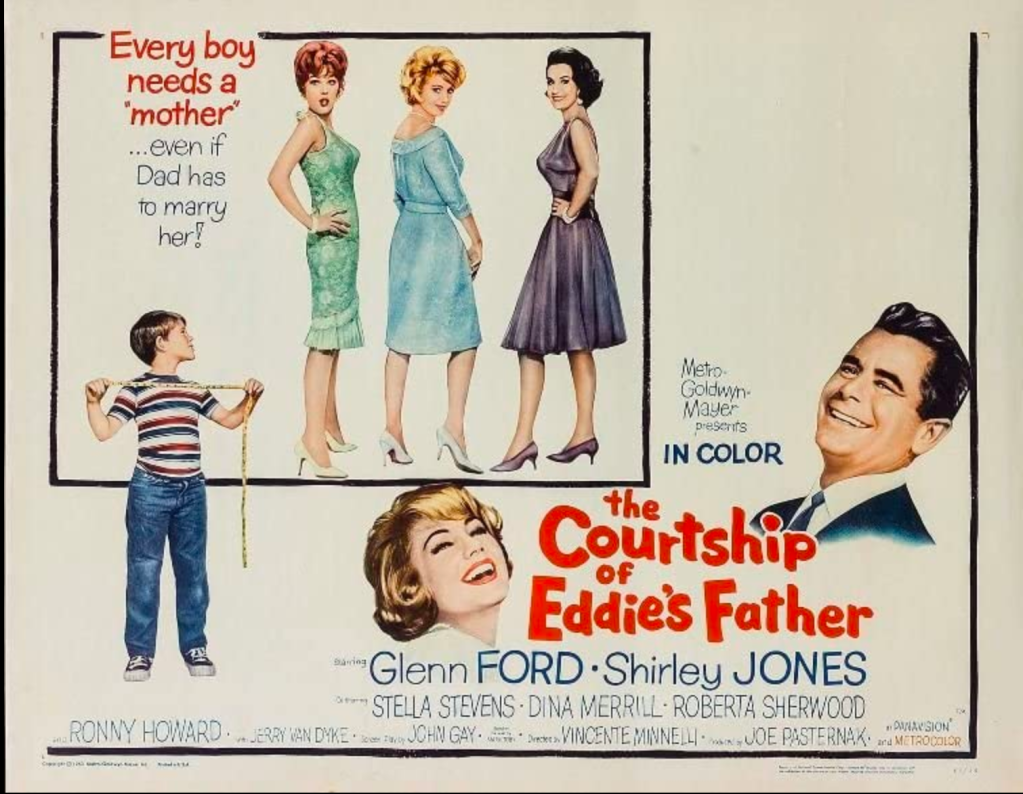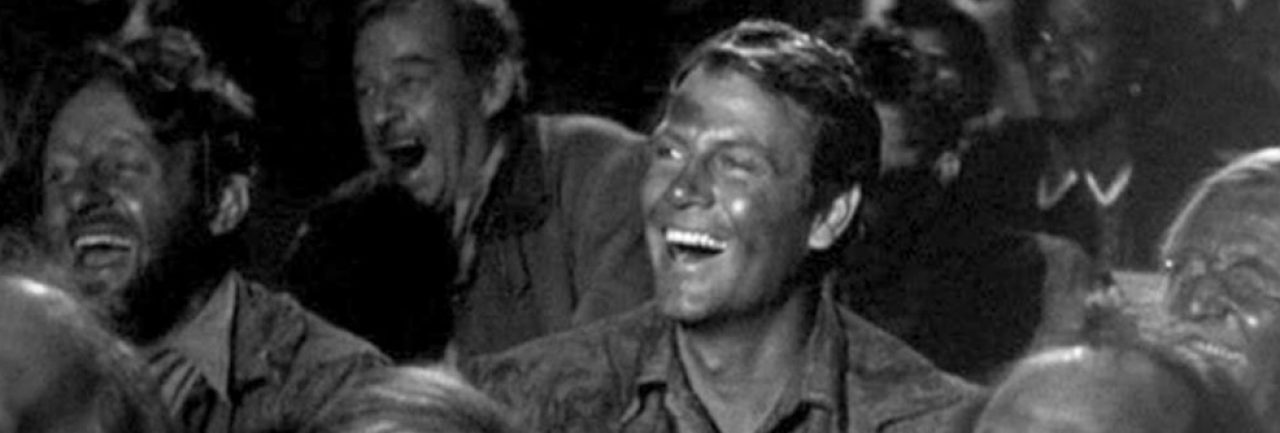
When my daughter Maria was little, after reading her a bedtime story, I’d hang around in her room and we’d have what she dubbed “chat time,” where we’d talk about this and that. At the end, we’d sometimes recap what she (again) called “the train” — how the first subject led to the next, and so on, to the end. A Movies-in-Other-Movies train starts with Bombshell, where the movie-in-movies was Red Dust. Then Bombshell was used in The Prize.
And today we have The Courtship of Eddie’s Father (1963), directed by Vincente Minelli, who was previously represented on this blog by his clever use of The Bad and the Beautiful in Two Weeks in Another Town. I had never seen The Courtship of Eddie’s Father, only the Bill Bixby sitcom that based on it, one of a bewildering number of late ’50s and ’60s shows about widowers or other single father figures raising kids — Bachelor Father, My Three Sons, Family Affair, Bonanza. (Widowed mothers — demographically more common — didn’t arrive till Diahann Carroll’s Julia in 1968. And divorced people … forget about it.)
The train is that the film Minelli chooses to have lonely and wistful Tom Corbett (Glenn Ford) watch on TV is John Ford’s Mogambo (1953), a remake of Red Dawn in which Clark Gable recreated his original role and (older guys being okay as Hollywood love interests, older women not so much) Ava Gardner and Grace Kelly (shown here) took the Jean Harlow and Mary Astor parts. The scene is notable for having Tom use a wireless remote control, just as Jack Lemmon did in The Apartment.
And just to finish up the train, Eddie is of course played by Ronny (later) Ron Howard, whose birthday is today!

